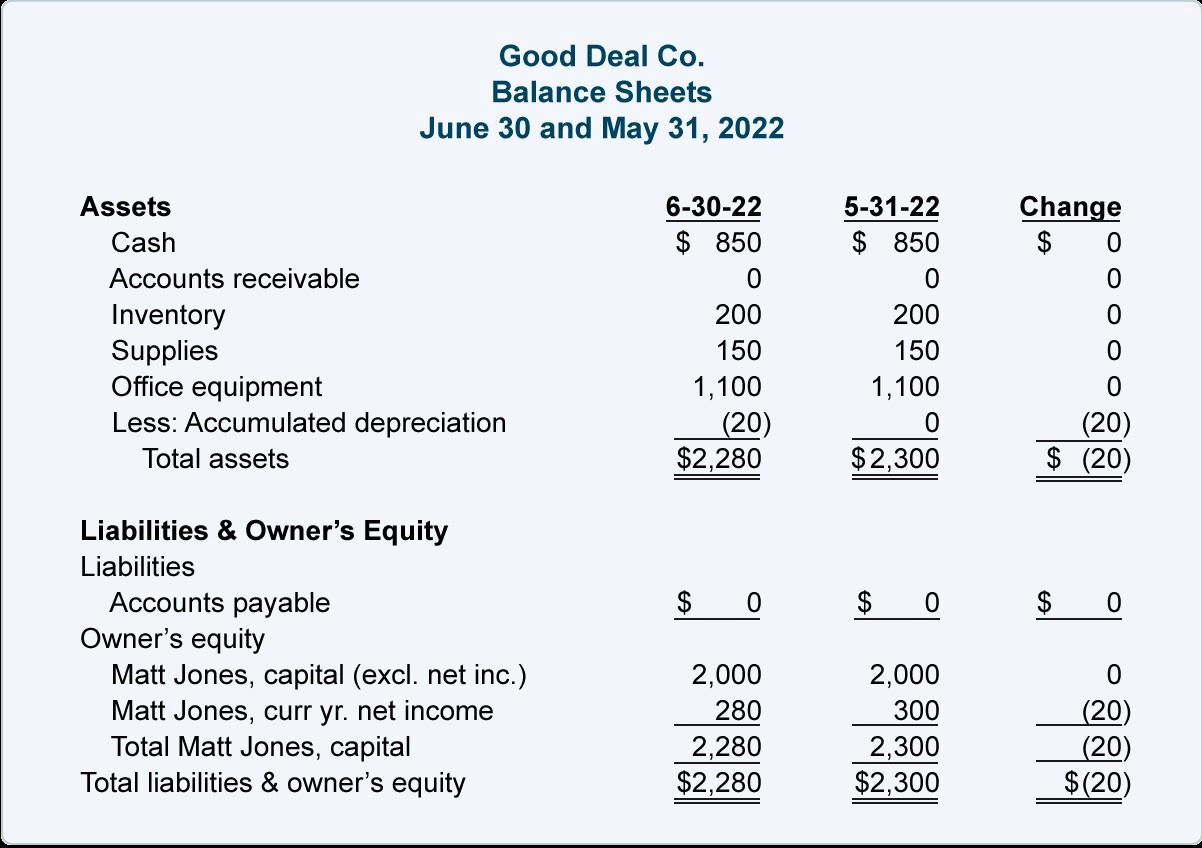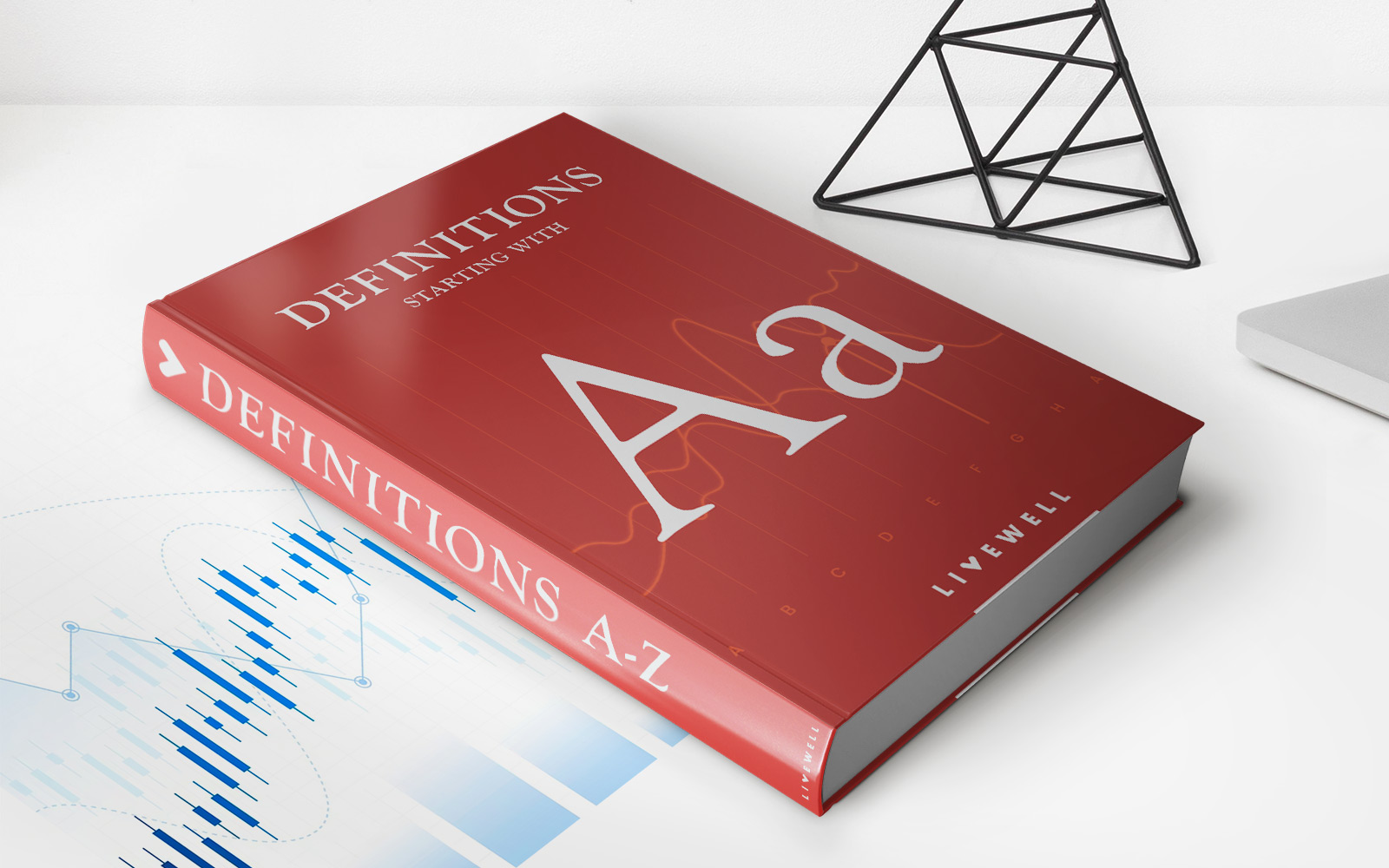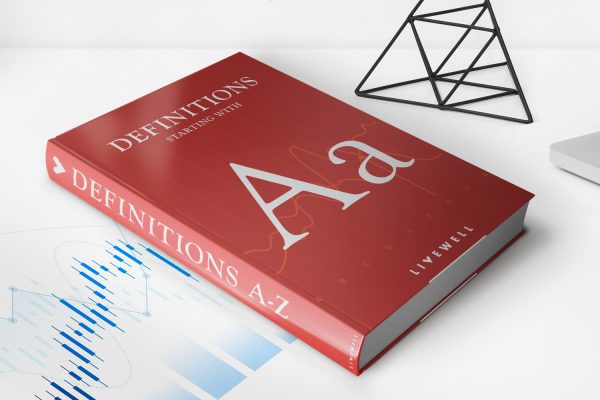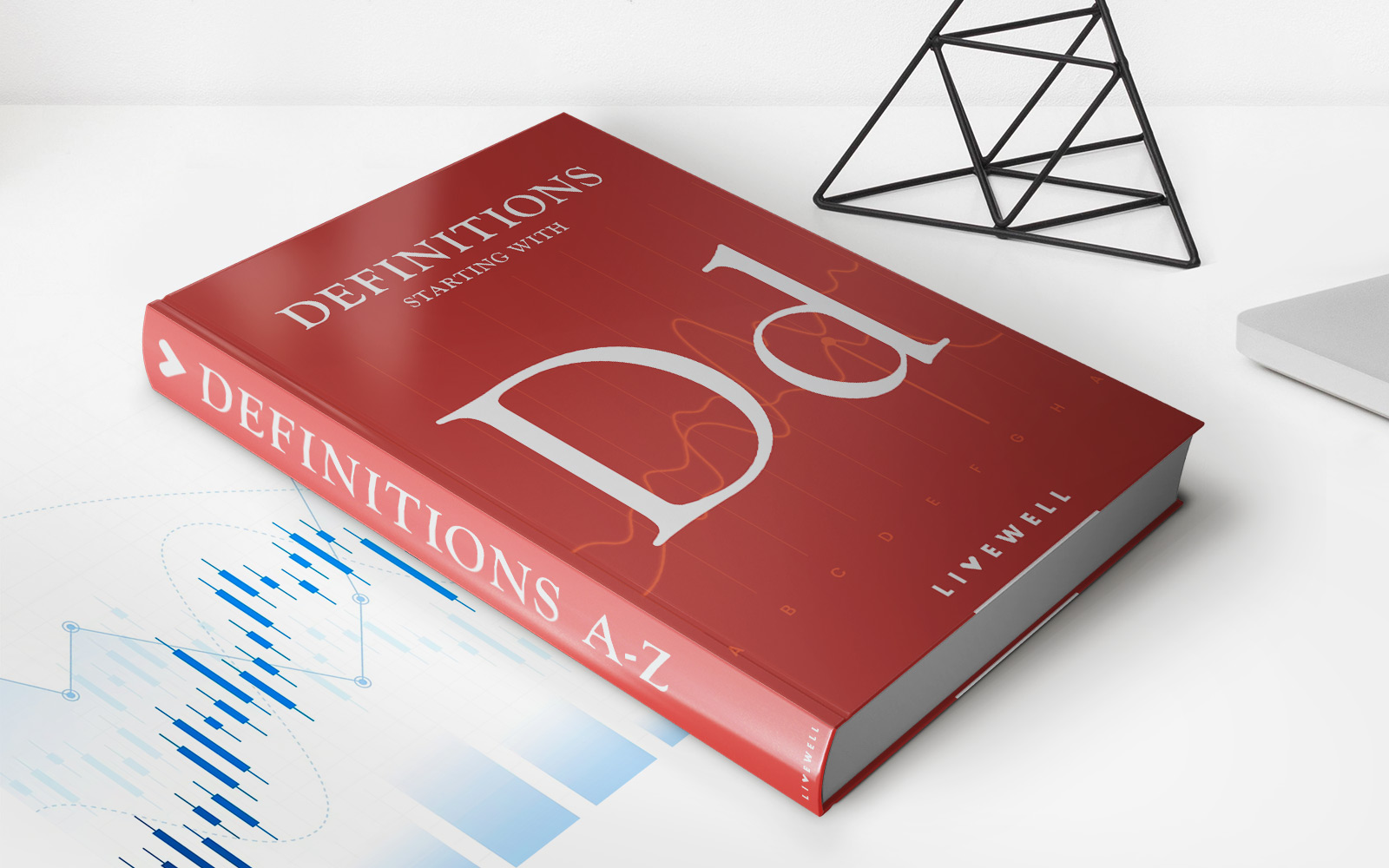Home>Finance>What Is The Difference Between A Pension And 401K


Finance
What Is The Difference Between A Pension And 401K
Modified: December 30, 2023
Learn the key distinctions between a pension and 401(k) plan. Discover the financial implications and benefits of each to make informed decisions about your retirement.
(Many of the links in this article redirect to a specific reviewed product. Your purchase of these products through affiliate links helps to generate commission for LiveWell, at no extra cost. Learn more)
Table of Contents
Introduction
In today’s world, planning for retirement is more important than ever. As you begin to consider your financial future, you may come across the terms “pension” and “401k”. While both play significant roles in retirement planning, they have different structures and features. Understanding the difference between a pension and a 401k can help you make informed decisions about your retirement savings.
A pension, also known as a defined benefit plan, is a retirement plan that an employer provides to its employees. In a pension plan, the employer contributes to a fund on behalf of the employee during their working years. This fund is then used to provide a fixed monthly income to the employee after retirement.
A 401k, on the other hand, is a retirement savings plan that allows you to contribute a portion of your pre-tax income towards a retirement account. The contributions to a 401k are typically made by the employee, although some employers may offer matching contributions. The funds in a 401k account can then be invested in various options such as stocks, bonds, or mutual funds, providing the potential for growth over time.
While both pensions and 401ks serve the purpose of funding retirement, there are key differences between the two. Understanding these differences can help you determine which option may be more suitable for your financial and retirement goals.
Definition of Pension
A pension is a type of retirement plan offered by employers to provide a guaranteed income to employees during their retirement years. It is a defined benefit plan, meaning that the payout is based on a formula that takes into account factors such as the employee’s salary and years of service.
With a pension, the employer is responsible for funding the plan and managing the investment of the contributions. The employee does not contribute directly to the pension fund but instead benefits from the employer’s contributions. The goal of a pension is to provide a steady income stream to the retiree, typically on a monthly basis, throughout their retirement years.
One of the key features of a pension is that the payout is predetermined based on factors such as salary and years of service. This means that the retiree knows exactly how much income they will receive each month. The amount of the pension may be adjusted for inflation to ensure that it retains its purchasing power over time.
Pensions are typically seen as a stable and secure form of retirement income, as they are backed by the employer’s financial resources. However, it’s important to note that not all employers offer pensions, and the availability of pensions has been decreasing over the years.
Overall, a pension provides retirees with financial security and peace of mind, knowing that they will receive a reliable income for the duration of their retirement. However, it is important to carefully consider the terms and conditions of a pension plan, as well as the financial stability of the employer, before relying solely on a pension as a retirement income source.
Definition of a 401k
A 401k is a popular retirement savings plan that allows employees to contribute a portion of their pre-tax income towards a retirement account. It is a defined contribution plan, meaning that the amount contributed and the investment returns determine the value of the account at retirement.
Unlike a pension, where the employer typically funds the plan, a 401k is primarily funded by the employee. However, some employers may offer a matching contribution, where they match a percentage of the employee’s contributions, up to a certain limit. This matching contribution is essentially free money that helps to boost the overall savings in the 401k account.
One of the key advantages of a 401k is the ability to choose how the contributions are invested. Employees have the option to invest their funds in various investment options such as stocks, bonds, mutual funds, or target-date funds. This allows individuals to tailor their investments based on their risk tolerance, financial goals, and market conditions.
Another important feature of a 401k is the tax advantage it offers. Contributions to a 401k are made on a pre-tax basis, meaning that the amount contributed is deducted from the employee’s taxable income for the year. This reduces the individual’s current tax liability and allows the contributions to grow tax-deferred until retirement. Withdrawals from a 401k are then taxed as ordinary income when taken during retirement.
Unlike a pension, the value of a 401k account can fluctuate based on market performance. The investment returns and the investment choices made by the employee can significantly impact the growth of the account. This allows for the potential for greater growth compared to a pension, but also carries more risk as the investments are subject to market volatility.
Overall, a 401k provides individuals with flexibility and control over their retirement savings. It allows for personalized investment choices and comes with tax advantages. However, it’s important to actively manage and monitor the 401k account to ensure it aligns with one’s retirement goals and risk tolerance.
Key Features of a Pension
Pensions have distinct features that set them apart from other retirement plans. Understanding these key features can help individuals evaluate whether a pension aligns with their financial goals and retirement needs.
1. Guaranteed Income: One of the main advantages of a pension is that it provides a guaranteed income stream for life. The amount of the pension is typically based on factors such as salary and years of service, ensuring a stable source of income during retirement. This regular paycheque can provide a sense of financial security and reduce the risk of outliving one’s savings.
2. Employer-Funded: In most cases, a pension is funded by the employer. The employer makes contributions to the pension fund on behalf of the employee, and the responsibility for managing the investments and ensuring the sustainability of the fund lies with the employer. This means that employees do not have to actively contribute to the plan, alleviating the need for personal saving discipline.
3. Professional Investment Management: Pensions are typically managed by professional investment managers who make decisions on behalf of the pension fund. These experts are responsible for selecting and monitoring investments to ensure the fund’s growth and long-term sustainability. This professional management can potentially result in higher returns and reduce the burden of investment decision-making for the employee.
4. Inflation Adjustments: Many pension plans offer a provision for adjusting the pension payments to account for inflation. This helps to ensure that the purchasing power of the pension income remains relatively stable over time, mitigating the impact of rising living costs during retirement.
5. Spousal Benefits: Pensions often include options for spousal benefits, such as joint and survivor annuity. This means that even after the pension holder passes away, their surviving spouse will continue to receive a portion or all of the pension income. This feature provides additional financial protection for couples during retirement.
6. No Investment Risk: Unlike other retirement plans such as a 401k, the investment risk in a pension plan is borne by the employer and not the employee. This means that regardless of market fluctuations, the employee will receive the predetermined pension income as promised by the employer.
It’s important to note that not all employers offer pensions, and the availability of pensions has been declining in recent years. However, for those fortunate enough to have access to a pension, these key features can make a significant difference in securing a reliable and stable income source for retirement.
Key Features of a 401k
401k plans have become a popular retirement savings option due to their flexibility and tax advantages. Understanding the key features of a 401k can help individuals make informed decisions about their retirement savings strategy.
1. Employee Contributions: Unlike pensions, where the employer typically funds the plan, 401k plans are primarily funded by employee contributions. Individuals have the option to choose how much they want to contribute to their 401k account, up to the annual contribution limit set by the IRS. This allows for flexibility in determining the level of retirement savings based on one’s financial goals and income.
2. Employer Matching: Many employers offer a matching contribution to their employees’ 401k plans. This means that for every dollar the employee contributes, the employer will match a certain percentage, up to a specified limit. This matching contribution is essentially free money and can significantly boost the overall savings in the 401k account.
3. Tax Advantages: Contributions to a 401k are made on a pre-tax basis, meaning they are deducted from the employee’s taxable income for the year. This reduces the individual’s current taxable income and allows the contributions to grow tax-deferred until retirement. This tax advantage can result in significant savings over time and maximize the growth potential of the investments within the 401k account.
4. Investment Options: A key feature of a 401k is the ability to choose how the contributions are invested. Employees have a range of investment options to select from, such as stocks, bonds, mutual funds, or target-date funds. This flexibility allows individuals to tailor their investments based on their risk tolerance, financial goals, and market conditions, potentially maximizing returns over time.
5. Portability: Another advantage of a 401k is its portability. If an employee leaves their current job, they have the option to roll over their 401k into an individual retirement account (IRA) or a new employer’s 401k plan. This flexibility allows individuals to continue growing their retirement savings even when changing jobs.
6. Loan and Withdrawal Options: In certain situations, individuals can take loans or make withdrawals from their 401k. While these options are available, it’s important to note that there are specific rules and penalties associated with taking early withdrawals or loans that can impact the long-term growth of the account. Therefore, it’s advisable to carefully consider the implications before accessing the funds.
401k plans offer individuals greater control and flexibility over their retirement savings compared to traditional pensions. The ability to contribute, the potential for employer matching, tax advantages, investment choices, portability, and loan/withdrawal options make a 401k an attractive option for building a retirement nest egg.
Differences between Pensions and 401ks
While both pensions and 401k plans serve the purpose of funding retirement, there are several key differences between the two. Understanding these differences can help individuals determine which retirement savings option may be best suited for their needs.
1. Funding: Pensions are primarily funded by employers, who contribute to the pension fund on behalf of their employees. On the other hand, 401k plans are mainly funded by employees, although employers may offer matching contributions. This difference in funding means that individuals have more control and responsibility over their 401k savings, while pensions are dependent on the financial stability and generosity of the employer.
2. Guaranteed Income: Pensions provide a guaranteed income stream for life, typically based on factors such as salary and years of service. This means that retirees receive a fixed monthly payment that continues throughout their retirement years. In contrast, 401k plans do not provide a guaranteed income. The final payout from a 401k account depends on the individual’s contributions, investment returns, and the choices made at retirement, such as whether to purchase an annuity or make periodic withdrawals.
3. Investment Control: With a pension, the employer manages the investments and assumes the investment risk. Pension funds are typically invested in a diversified portfolio selected by the employer or professional fund managers. In a 401k plan, the individual has control over investment choices. They can allocate their contributions among different investment options, such as stocks, bonds, or mutual funds. This allows for potentially higher returns but also carries the risk of market fluctuations and requires active management on the part of the employee.
4. Portability: Pensions are tied to the employer offering the plan. Individuals who change jobs may not be able to take their pension with them, resulting in a loss of benefits or the need to transfer the pension into an individual retirement account (IRA). On the other hand, 401k plans are portable and can be rolled over into a new employer’s plan or an IRA, allowing for continued growth and investment control.
5. Tax Treatment: Pensions and 401k plans have different tax treatment. Pension income is typically taxed as ordinary income when withdrawn during retirement. Contributions to a 401k are made on a pre-tax basis, reducing taxable income in the present, and withdrawals in retirement are subject to income tax. However, certain circumstances may allow for tax advantages, such as Roth 401k contributions or using a portion of the 401k for tax-free Roth conversions.
6. Employer Responsibility: With a pension, the employer assumes responsibility for managing the investments, ensuring the fund’s solvency, and providing the guaranteed income. In a 401k plan, the responsibility for investment choices, monitoring performance, and managing the account rests on the employee. This difference places more control and risk on the individual in a 401k plan.
Understanding the differences between pensions and 401k plans can help individuals make informed decisions about which retirement savings option aligns with their financial goals, risk tolerance, and retirement income needs.
Similarities between Pensions and 401ks
While pensions and 401k plans have distinct differences, there are also certain similarities between the two retirement savings options. Recognizing these similarities can provide a broader understanding of how both plans aim to assist individuals in building a secure retirement.
1. Retirement Savings: Both pensions and 401k plans are designed to help individuals accumulate funds for retirement. The ultimate goal of both options is to provide individuals with a source of income during their non-working years.
2. Tax Advantages: Both pensions and 401k plans offer tax benefits. In a pension, contributions made by the employer are typically tax-deductible. Similarly, contributions to a 401k are made on a pre-tax basis, lowering the individual’s taxable income for the year. This allows for potential tax savings and the ability to defer taxes on investment gains until retirement.
3. Employer Involvement: In both pensions and 401k plans, the employer plays a role. With pensions, the employer funds the plan and manages the investments. In 401k plans, while the primary contributions come from the employee, many employers offer matching contributions. This employer involvement, whether through funding or matching contributions, enhances the retirement savings potential for employees.
4. Contribution Limits: Both pensions and 401k plans have contribution limits set by the government. For pensions, these limits are related to the amount the employer can contribute on behalf of the employee. 401k plans also have annual contribution limits set by the IRS, which apply to the employee’s contributions. These limits are designed to prevent excessive tax advantages for high-income earners and ensure fairness in retirement savings opportunities.
5. Retirement Age and Withdrawals: Pensions and 401k plans generally have specific rules and regulations regarding the age at which individuals can start receiving retirement benefits. Typically, individuals can begin accessing their pension or 401k funds without triggering penalties upon reaching the age of 59 ½. However, early withdrawals from either type of plan before this age may result in penalties and taxes, with certain exceptions.
6. Retirement Income: Both pensions and 401k plans aim to provide individuals with a source of income during retirement. Whether through the guaranteed income stream of a pension or the accumulated savings in a 401k account, the objective is to ensure financial stability and support throughout the retirement years.
While there are fundamental differences between pensions and 401k plans, it’s important to recognize the similarities in their purpose, tax advantages, employer involvement, contribution limits, retirement age, and the ultimate goal of securing a comfortable retirement income.
Pros and Cons of Pensions
Pensions have both advantages and disadvantages that are worth considering when planning for retirement. Evaluating these pros and cons can help individuals determine if a pension is the right option for their financial goals and retirement needs.
Pros:
1. Guaranteed Income: One of the major advantages of pensions is the guarantee of a steady income stream throughout retirement. This provides retirees with financial security, knowing that they will receive a fixed monthly payment for life.
2. Employer-Funded: Pensions are typically funded by employers, which means that employees do not have to actively contribute to the plan. This alleviates the need for personal saving discipline and allows individuals to rely on their employer’s financial resources for retirement income.
3. Professional Investment Management: Pensions are managed by professional investment managers who handle investment decisions and ensure the long-term sustainability of the fund. This expertise helps to maximize returns and reduce the burden of investment management for retirees.
4. Spousal Benefits: Many pension plans offer options for spousal benefits, such as joint and survivor annuity. This means that even after the pension holder passes away, their surviving spouse will continue to receive a portion or all of the pension income. This provides additional financial protection for couples during retirement.
Cons:
1. Decreasing Availability: Unfortunately, the availability of pension plans has been decreasing over the years. Many companies have shifted to offering 401k plans or other retirement savings options, making pensions less common. This means that not all individuals have access to a pension plan for their retirement.
2. Lack of Investment Control: With a pension, the employer manages the investments and assumes the investment risk. This means that retirees have limited control over how their retirement funds are invested, potentially missing out on higher returns due to conservative investment strategies by the employer.
3. Vulnerable to Employer Stability: The security of a pension is contingent on the financial stability of the employer. If the company encounters financial difficulties or goes bankrupt, it can impact the pension fund and potentially result in a reduction in pension benefits. This vulnerability exposes retirees to risks beyond their control.
4. Lack of Portability: Pensions are typically tied to the employer offering the plan. This lack of portability means that if an individual changes jobs, they may lose their pension benefits or have to transfer the pension into an individual retirement account (IRA). This could result in a loss of benefits or additional administrative complexities.
When considering a pension, it’s essential to carefully weigh the pros and cons to ensure that it aligns with one’s financial situation and retirement goals. The guaranteed income and professional management are appealing aspects of pensions, but the decreasing availability, lack of investment control, vulnerability to employer stability, and lack of portability should also be taken into account.
Pros and Cons of 401ks
401k plans are a popular choice for retirement savings due to their flexibility and tax advantages. However, they also have their pros and cons that individuals should consider when deciding on the best retirement savings option for their needs. Let’s explore the advantages and disadvantages of 401k plans:
Pros:
1. Employee Contributions: 401k plans allow employees to contribute a portion of their pre-tax income towards their retirement savings. This empowers individuals to take control of their retirement savings and determine the level of contributions that align with their financial goals.
2. Employer Match: Many employers offer a matching contribution to employees’ 401k plans. This means that the employer will match a certain percentage of the employee’s contributions, up to a specified limit. Employer matching is essentially free money, boosting the overall savings in the 401k account and accelerating retirement savings.
3. Investment Flexibility: 401k plans offer individuals a range of investment options such as stocks, bonds, mutual funds, or target-date funds. This flexibility allows individuals to tailor their investments based on their risk tolerance, financial goals, and market conditions, potentially maximizing returns over time.
4. Tax Advantages: Contributions to a 401k plan are made on a pre-tax basis, reducing the individual’s taxable income for the year. This results in immediate tax benefits, as contributions are deducted from the taxable income. Additionally, the growth of investments within the 401k account is tax-deferred, allowing for potential compounding of earnings until retirement.
5. Portability and Rollovers: 401k plans are portable, meaning that if an individual changes jobs, they can roll over their 401k into a new employer’s plan, an individual retirement account (IRA), or continue to manage it separately. This portability allows for flexibility and continued growth of retirement savings, regardless of job changes.
Cons:
1. Investment Risks: With 401k plans, individuals bear the responsibility and risk of investment choices. The performance of the investments can fluctuate based on market conditions, potentially impacting the growth of the retirement savings. Individuals need to monitor and manage their investment choices to mitigate potential risks.
2. Volatility: Market volatility can have a significant impact on the value of investments within a 401k plan. Economic downturns or market fluctuations can result in temporary declines in the account balance. However, it’s important to remember that 401k plans are long-term investments and should not be solely influenced by short-term market fluctuations.
3. Dependency on Employee Contributions: Unlike pensions, where the employer primarily funds the plan, 401k plans rely on the contributions made by employees. This places the onus on individuals to actively contribute and save for retirement, which requires discipline and financial planning.
4. Early Withdrawal Penalties: While 401k plans allow for tax-advantaged growth and withdrawals during retirement, early withdrawals before the age of 59 ½ typically incur penalties and taxes. This discourages individuals from tapping into their retirement savings prematurely.
By considering the advantages and disadvantages of 401k plans, individuals can make informed decisions about their retirement savings strategy. The flexibility, employer matching, investment options, tax advantages, portability, and control over contributions are appealing features of 401k plans. However, individuals should be aware of the investment risks, market volatility, dependency on employee contributions, and potential penalties for early withdrawals.
Choosing Between a Pension and 401k
Choosing between a pension and a 401k is an important decision when it comes to planning for retirement. Each option has its own advantages and considerations, and the choice depends on individual circumstances and preferences. Here are some factors to consider when deciding between a pension and a 401k:
1. Financial Goals and Risk Tolerance: Assessing your financial goals and risk tolerance is crucial. If you prioritize a stable and guaranteed income stream throughout retirement, a pension may be a better choice. Pensions provide a predetermined monthly income, reducing the risk of market fluctuations. However, if you are comfortable taking on investment risk and prefer more control over your retirement savings, a 401k’s potential for higher returns based on investment choices may be appealing.
2. Employer Offerings: Consider the retirement benefits offered by your employer. If your employer provides a pension plan, it may be worth taking advantage of the guaranteed income and employer contributions. However, if your employer offers a 401k plan with matching contributions, the free money provided through the match can significantly boost your retirement savings.
3. Investment Control: Assess your comfort level with investment control and decision-making. If you prefer having more control over where your retirement savings are invested, a 401k allows you to choose among various investment options. With a pension, the employer manages the investments, which may result in limited control and potentially conservative investment strategies.
4. Portability: Consider your job stability and potential for career changes. If you anticipate changing jobs frequently, having a portable retirement savings option like a 401k provides flexibility. You can roll over the funds into a new employer’s plan or an individual retirement account (IRA). Pensions, on the other hand, are often tied to specific employers and may not be transferable.
5. Tax Considerations: Evaluate the tax advantages and implications of each option. With a pension, income received during retirement is subject to ordinary income tax. Contributions made to a 401k are tax-deferred, reducing your current taxable income, and the growth is tax-free until retirement. Consider your current and future tax situation to determine which option aligns best with your tax planning goals.
6. Combination Approach: It’s worth considering a combination approach to retirement savings, utilizing both a pension and a 401k if available. This allows you to benefit from the guaranteed income of a pension while also taking advantage of the investment potential and flexibility of a 401k.
Ultimately, the choice between a pension and a 401k depends on your personal circumstances, risk tolerance, financial goals, and the retirement benefits offered by your employer. Consider these factors carefully and consult with a financial advisor to make an informed decision that aligns with your long-term retirement goals.
Conclusion
When it comes to planning for retirement, choosing between a pension and a 401k is a decision that requires careful consideration. Pensions and 401k plans have distinct features, advantages, and disadvantages that individuals should weigh against their own financial goals and preferences.
Pensions provide the security of a guaranteed income stream throughout retirement, funded by the employer. They alleviate the burden of investment decision-making and offer peace of mind for individuals seeking a stable retirement income. However, the decreasing availability, lack of investment control, and vulnerability to employer stability make pensions less common and introduce potential risks.
On the other hand, 401k plans offer flexibility, investment control, and portability. They allow individuals to contribute pre-tax income, potentially receive employer matching contributions, and tailor their investment choices to match their risk tolerance and financial goals. While 401k plans come with investment risks, market volatility, and dependency on employee contributions, they provide the potential for higher returns and offer valuable tax advantages.
It’s important to remember that the decision doesn’t have to be binary. Depending on individual circumstances, a combination approach may be appropriate. Using both a pension and a 401k, if available, allows individuals to benefit from the stability of a pension and the flexibility and growth potential of a 401k.
Ultimately, the right choice between a pension and a 401k depends on individual factors such as financial goals, risk tolerance, employer offerings, investment preferences, portability needs, and tax considerations. Consulting with a financial advisor can provide personalized guidance and help individuals make informed decisions that align with their retirement objectives.
Whichever option individuals choose, the most important aspect is to actively save and plan for retirement. Regular contributions and thoughtful investment decisions will contribute significantly to building a secure financial future. Whether you opt for a pension, a 401k, or a combination, early and consistent retirement savings are key to enjoying a comfortable retirement.














